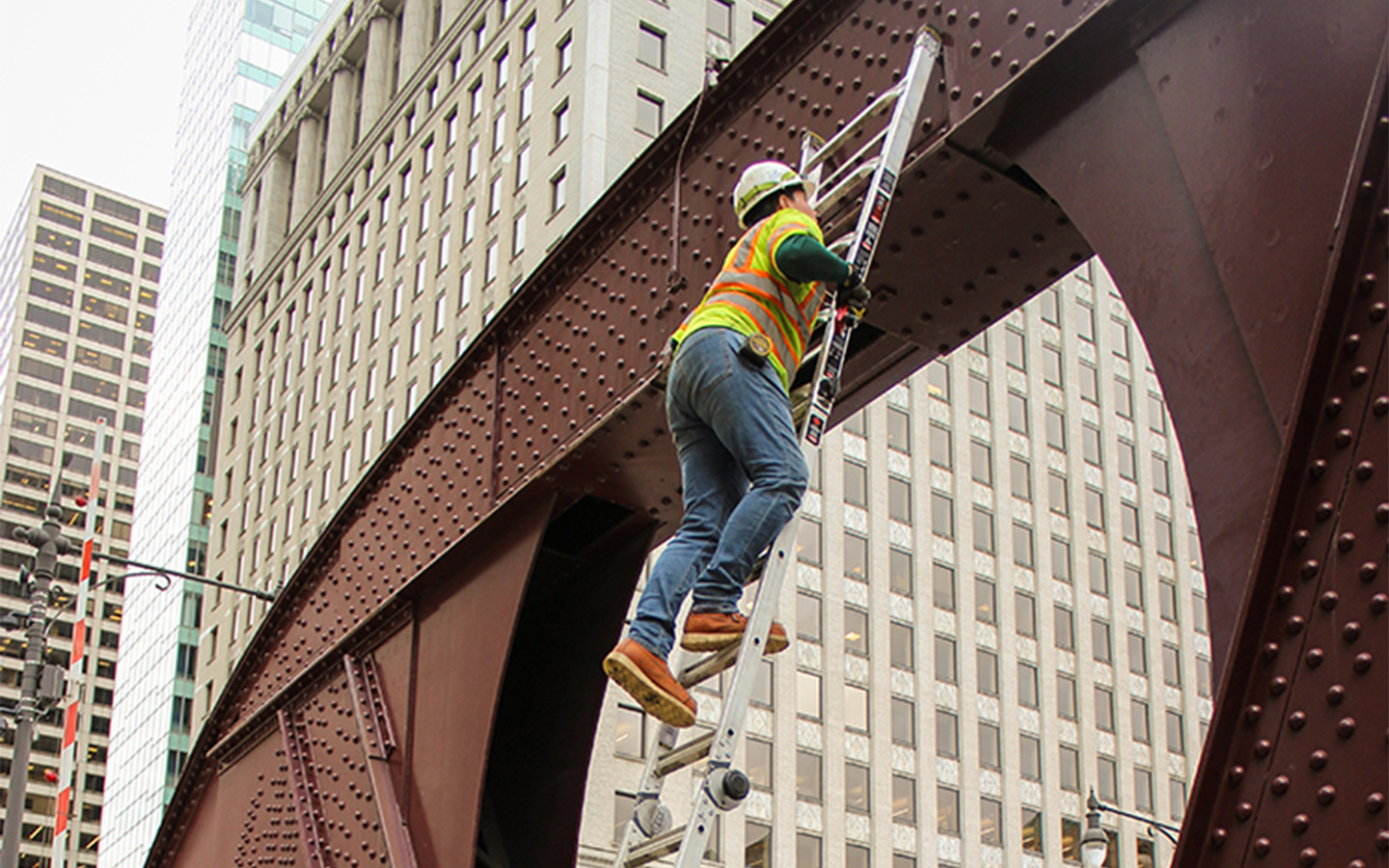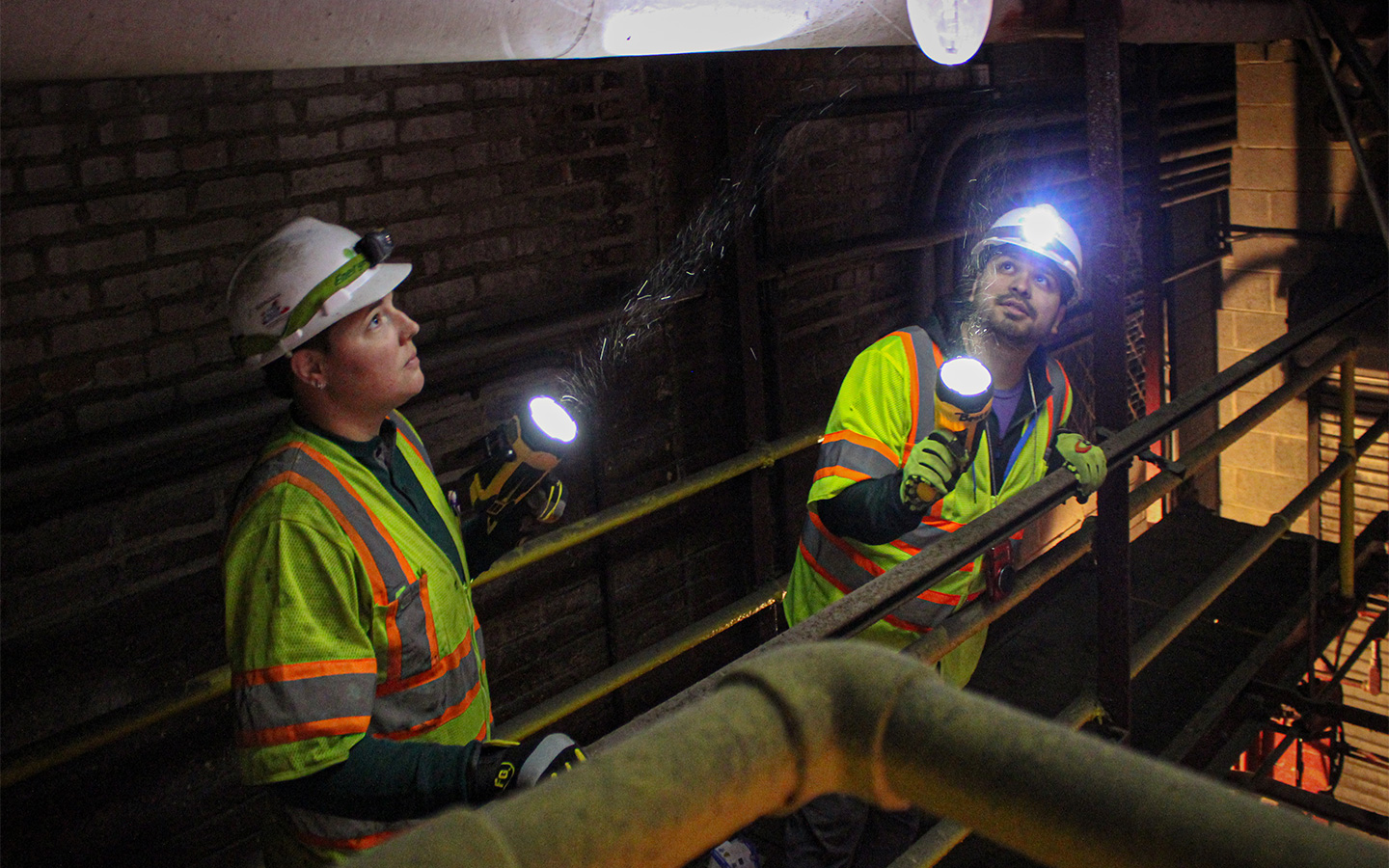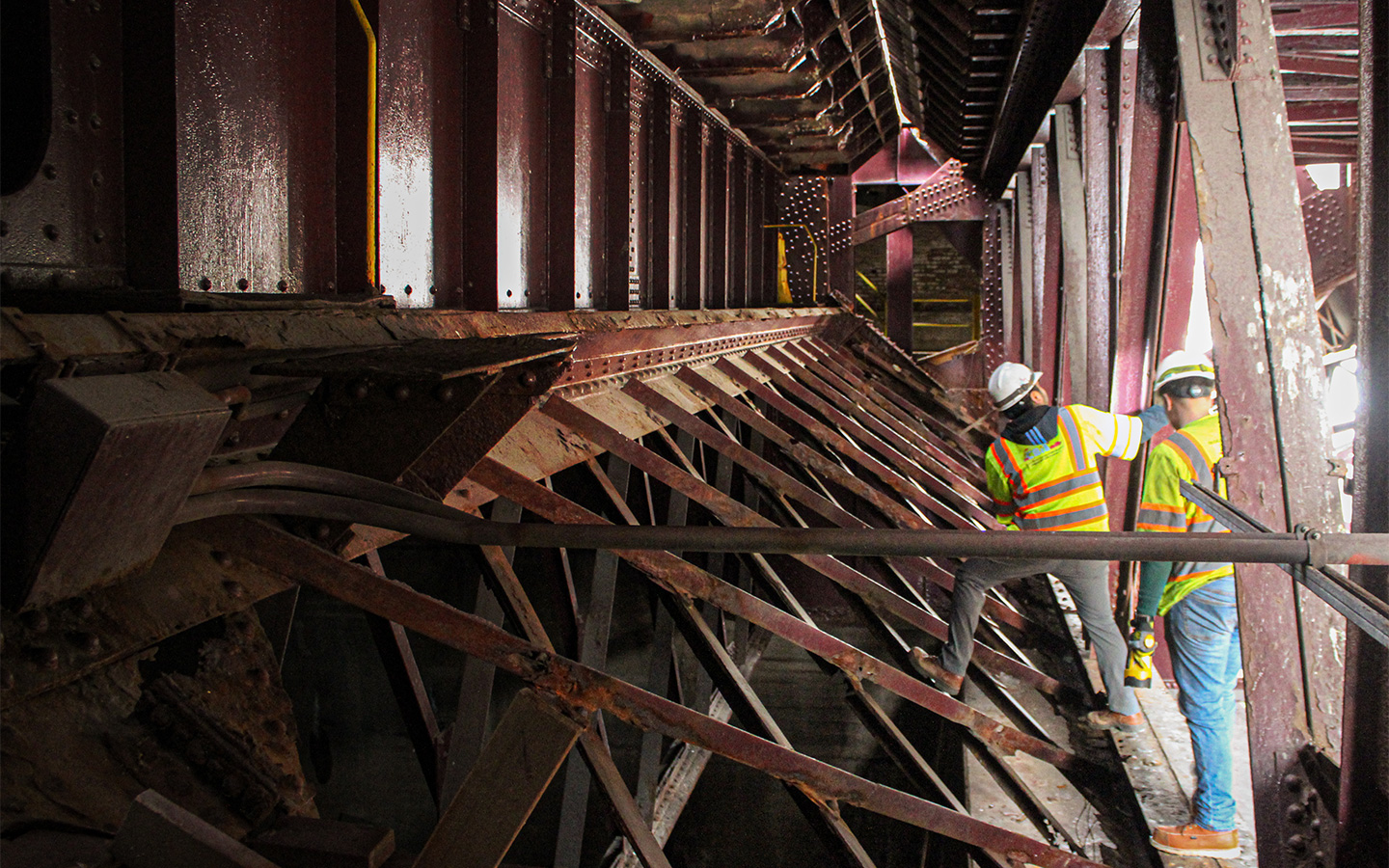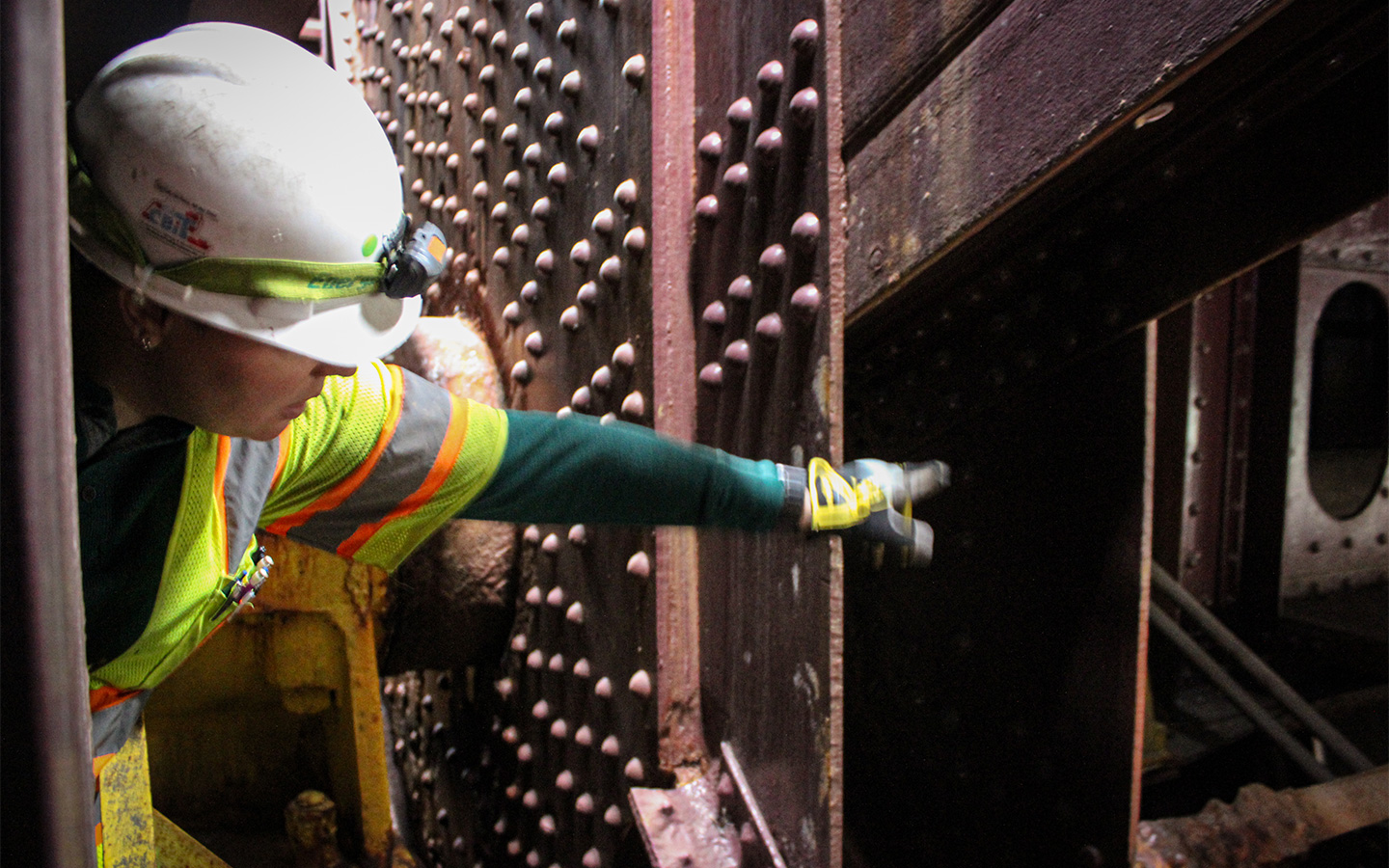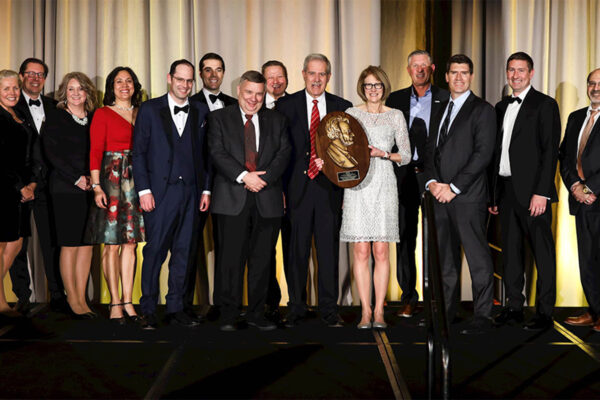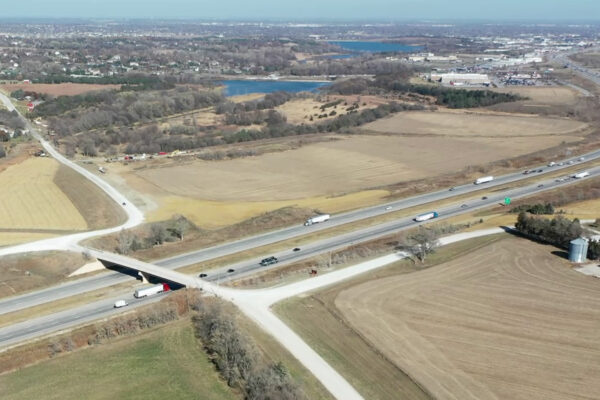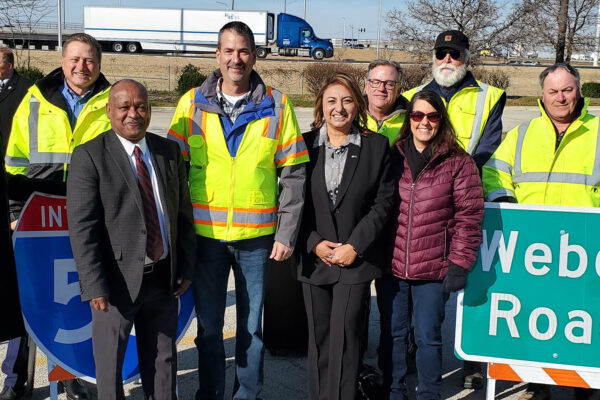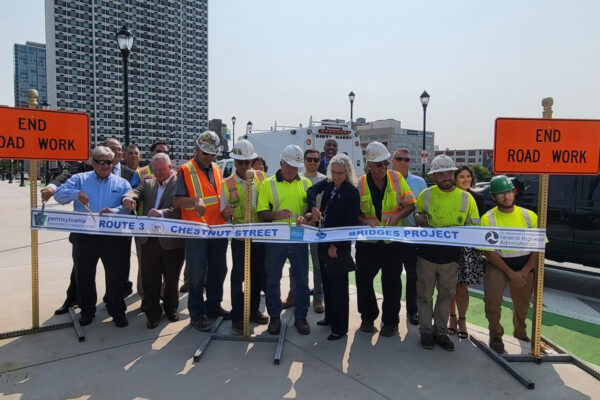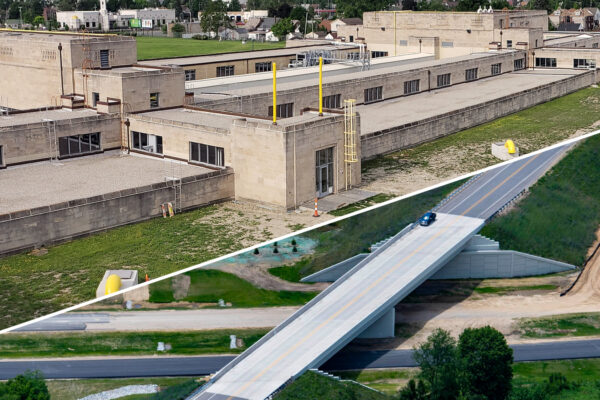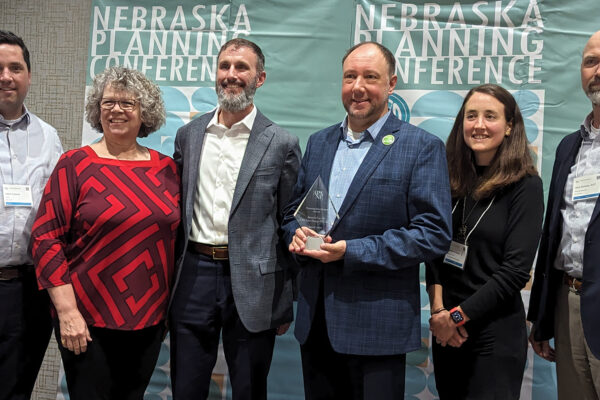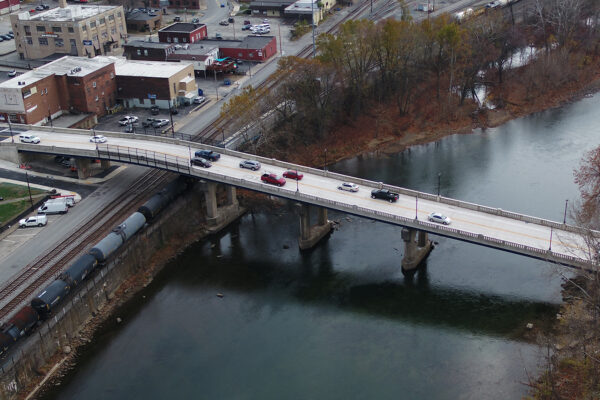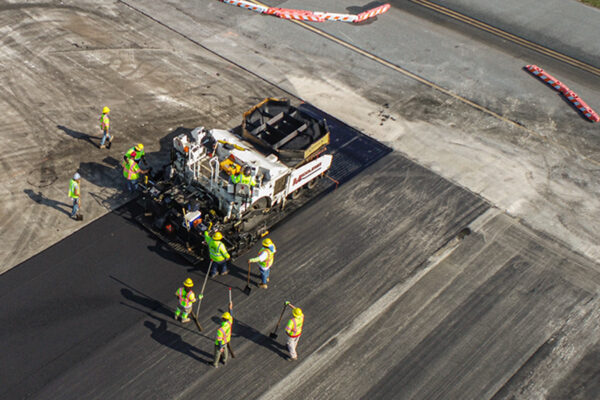CBIT Inspects Historic Movable Bridge Inventory
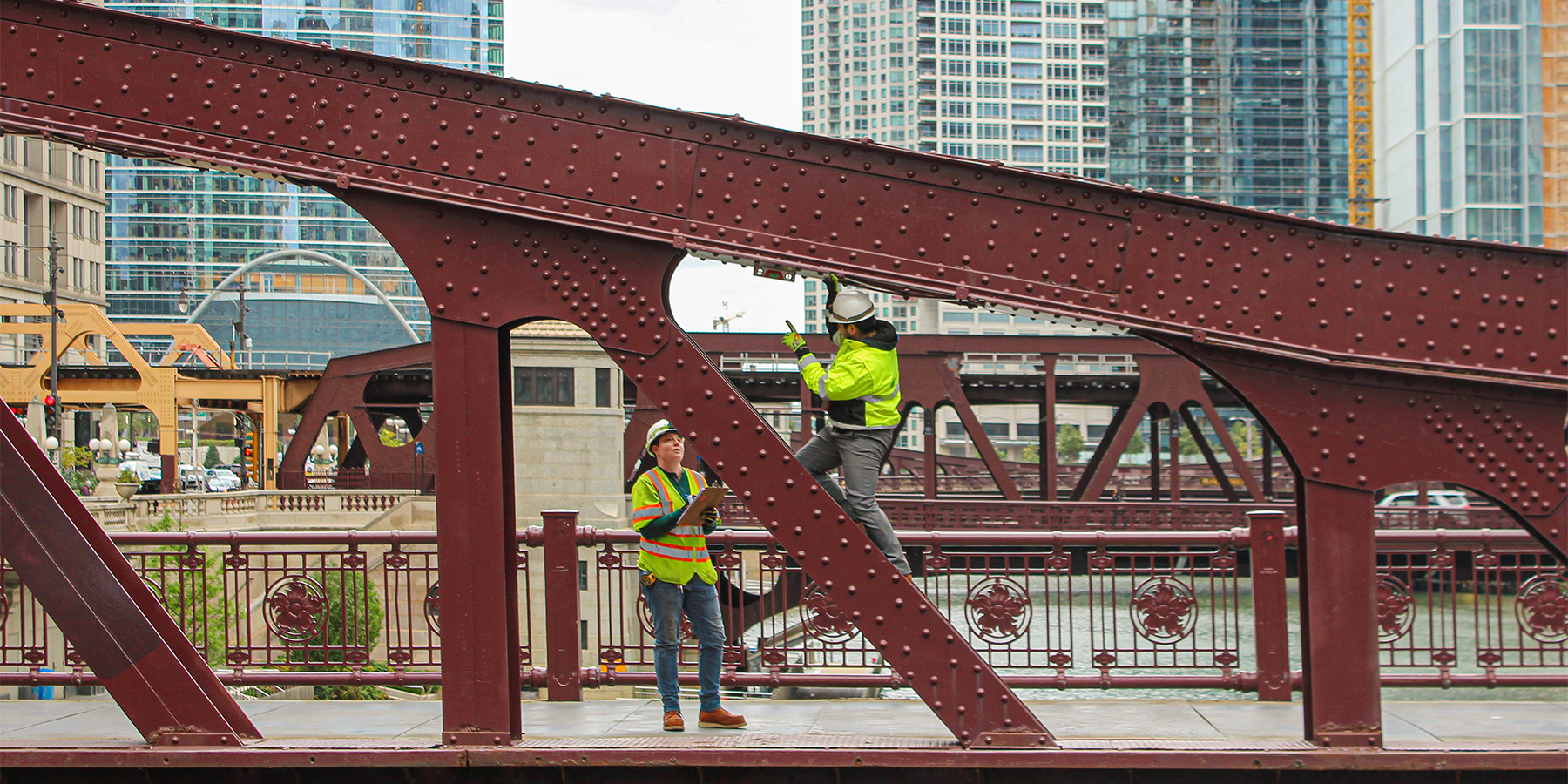
CHICAGO, IL — As end-of-season boat runs commenced on the Chicago River, annual inspections for Chicago’s historic bascule bridges were well underway. Inspectors performed a balancing act—sometimes literally—collecting comprehensive data from above, below and inside each bridge while coordinating their efforts with the Coast Guard, downtown commuters and, of course, Chicago’s unpredictable weather.
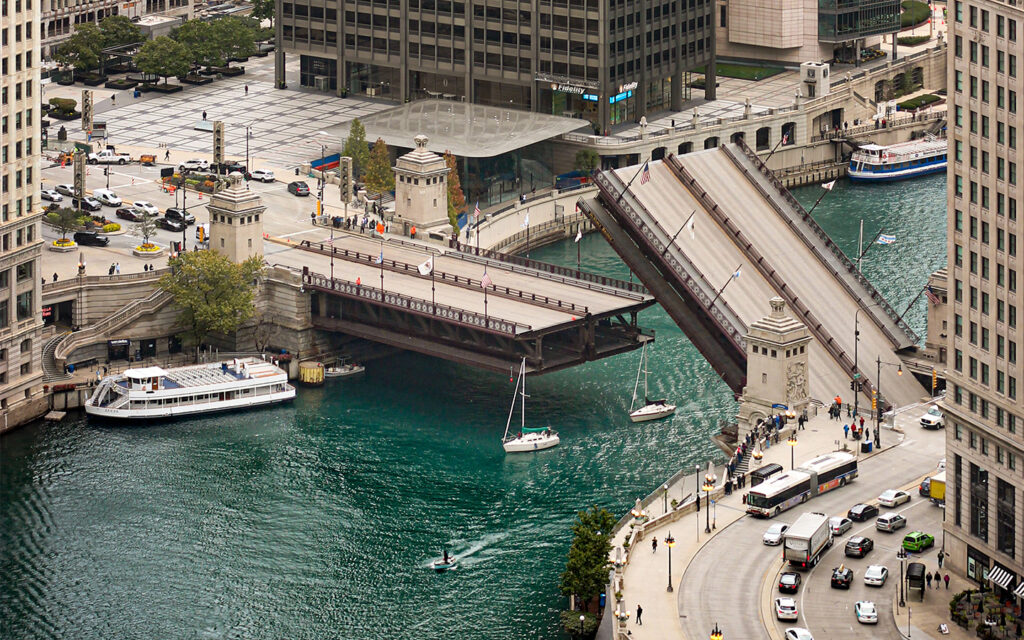
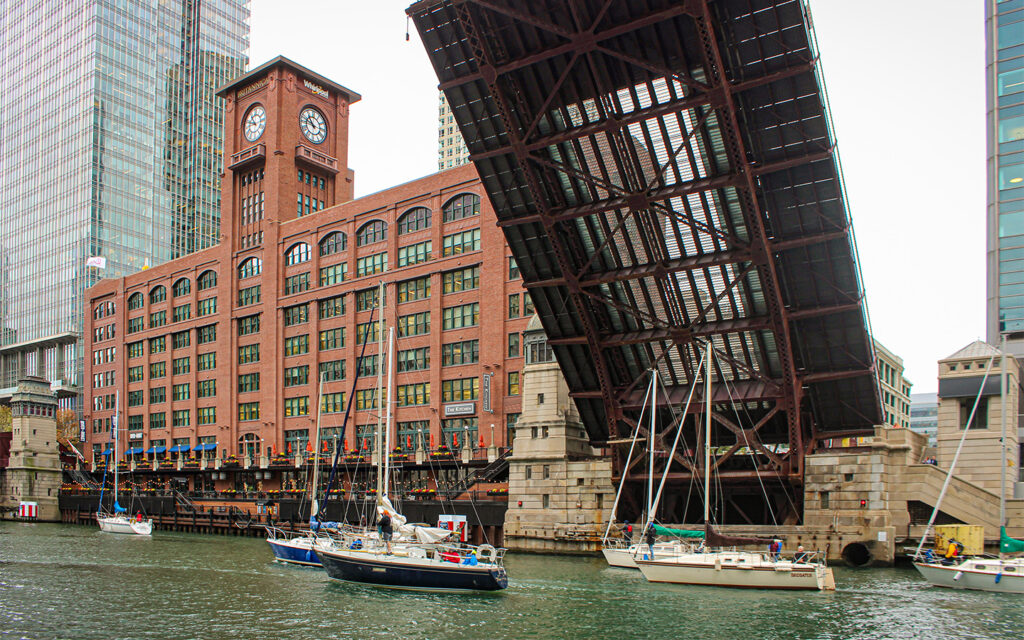
Chicago’s bascule bridges are an iconic feature of the city’s downtown; there are 20 of these historic structures—some of them now more than 100 years old—in the loop area alone. In total, Chicago is home to 52 movable bridges, with 43 of them still functioning.
Keeping these bridges in service requires routine inspection and maintenance. That’s where the Chicago Bridge Inspection Team (CBIT, for short) comes in. Led by Benesch’s Program Manager Mark Bendok, PE, SE, CBIT is a joint venture team tasked with leading city-wide inspections on Chicago’s 400+ bridges each year.
The structures vary in size and complexity, requiring a multi-disciplined team with the necessary tools and clearances to access any bridge component. To date, CBIT has enlisted over 60 inspectors to keep the massive number of required inspections on schedule. And while the movable bridges on the Chicago River comprise just a modest percentage of the city’s inventory, the time and talent required to inspect these movable river crossings is substantial.
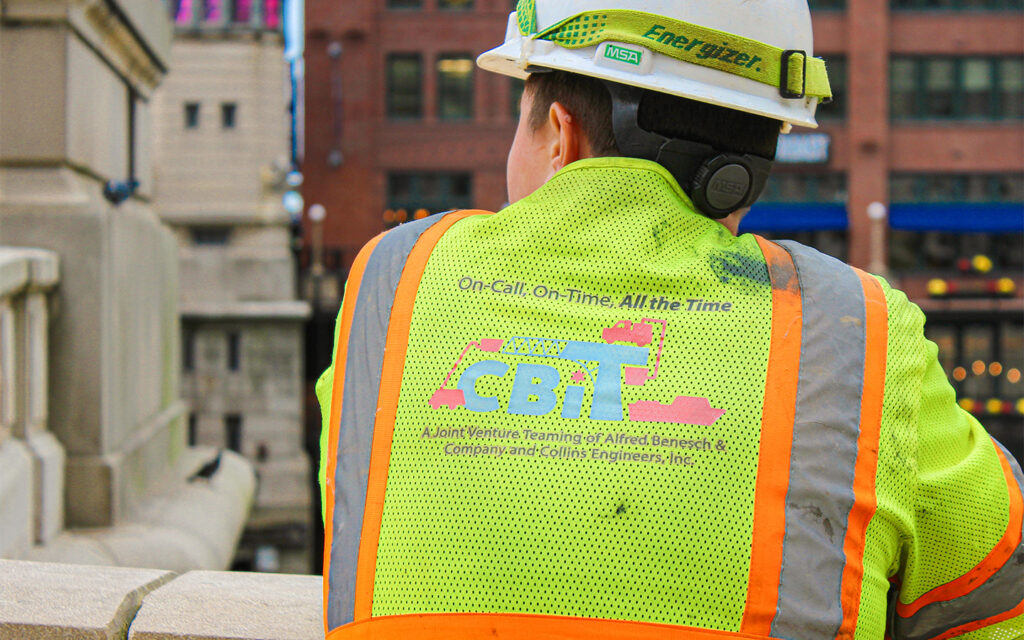
CBIT is providing city-wide bridge inspection services to the City of Chicago over a four-year contract. Their team is available to the city around the clock—in fact, their motto is: On-Call, On-Time, All the Time.
Inspecting the Bascule Bridges
Unlike other bridges in the city, which may only take a few hours to complete all inspection field work, these structures require multiple visits. What makes these inspections so time consuming? According to Bendok, it has to do with structural complexity.
“By nature of their design, bascule bridges are far more complex than standard bridges. Stand anywhere along the Chicago River and you’ll see a variety of movable bridge styles that have different components and inspection needs.”
Indeed, along the main branch of the Chicago River alone, one can spot a double decker roadway bridge at Lakeshore Drive and another at Michigan Avenue, several standard double leaf or trunnion-style structures, and even a bridge carrying vehicular and commuter rail traffic on different levels.
Barges with aerial lifts on the river allow inspectors to get under the bridges, completing various types of required inspections. But there’s more to see—from above the deck and inside the bridge tender houses.
“What you’re seeing out here right now,” Bendok said as inspectors access the bridges from barges on the river, “is only part of the process for any of these bridges.”
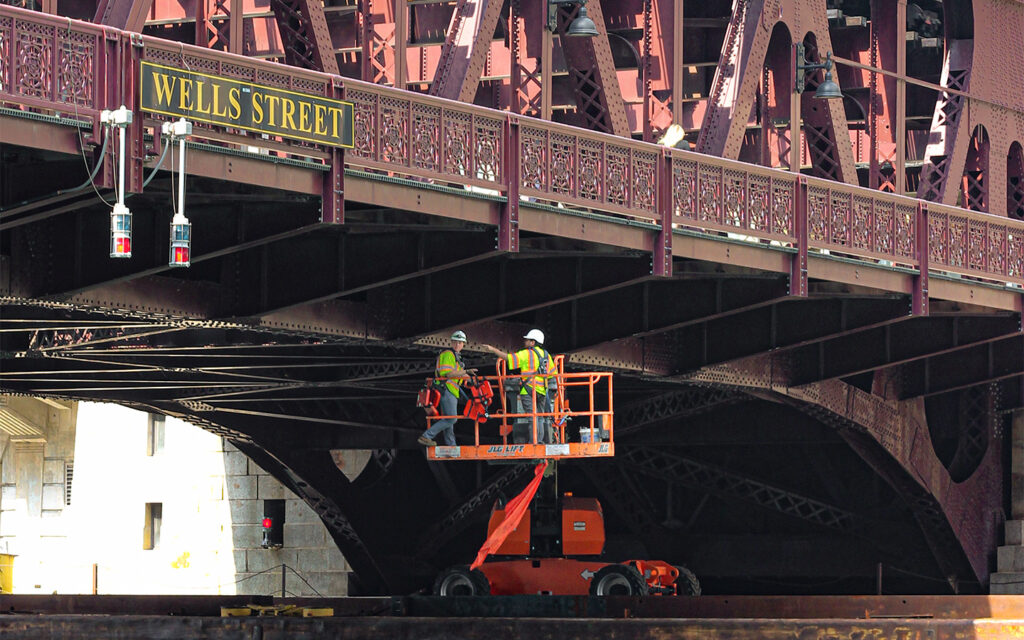
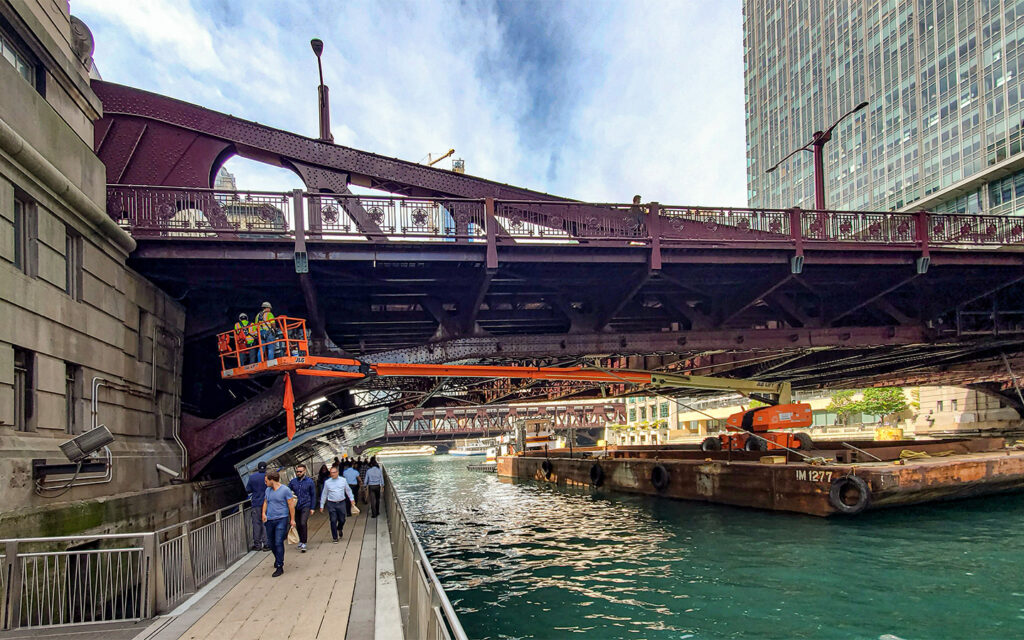
The LaSalle Street Bridge
Inspection Team Leader Denise Soehrman, PE, SE, has been spearheading coordination efforts on the river over the last several weeks of inspections. She’s been the conduit between CBIT inspection teams, the city and the coast guard.
“There’s a lot of proactive planning that happens well in advance to any of our field work taking place,” Soehrman says. “We have to coordinate proper permitting and access with the Chicago Department of Transportation and Chicago Transit Authority, adjacent property owners, the Coast Guard, and take care of any specialized equipment rentals we may need.”
On October 16, Soehrman and her inspection partner, Brian Moreno, tackled inspection duties above and below the LaSalle Street bridge deck, scheduling their activity around the morning’s boat run.
“When we’re out here, especially being downtown where it’s so busy, safety is a huge part of our focus,” said Moreno. “There are strict rules about where and how high we can climb, the equipment we use, and, we always want to be careful of our surroundings.”
Once the boats were past LaSalle Street, it was time to head inside the bridge house.
“Today we’re completing Element Level, Routine and Fracture Critical inspections,” said Soehrman. “which means we’re inspecting every structural element of the bridge—so, everything except for gears and wiring.”
Once inside the bridge house, a winding staircase descends into a labyrinth of platforms and walkways. Bascule bridges raise and lower via counterweight, with the help of a complex system of mechanical and electrical systems. To complete their inspections, Soehrman and Moreno have to get within arm’s reach of several different members. They compare the state of steel and concrete elements with the bridge plans to assess section loss (in the case of steel) or delamination (for concrete).
All in a Day’s (or Night’s) Work
With so many moving parts—literally and figuratively—managing this small portion of Chicago’s massive bridge inventory is an administrative and technical feat. Multiple pairs of inspectors were active on these movable structures from September to November, completing inspections at all hours of the day and night to accommodate traffic on the water, roadways, sidewalks and elevated rail system.
In early October, heavy rainfall raised the river so high that the inspection barge and aerial lift couldn’t fit under the structures, leading to additional schedule accommodations to keep everything on track.
And even after the field inspections were complete, CBIT’s work was far from over.
“After the inspections, we compile all the data,” says Moreno. “this starts before we even leave the bridge site. We review the last inspection report for that structure to make sure we’ve addressed any previously noted conditions, review our photos to make a list of priority images for the report, and make any extra notes we don’t want to forget about between the end of the inspection and when the report is created.”
Once back in the office, the inspectors run up against a hard deadline to complete their reports.
“Our findings need to be turned in to the Illinois Department of Transportation within 60 days of the inspection,” says Soehrman. “If we miss the deadline, the inspection becomes delinquent.”
Efficient, Effective Processes
Several factors contribute to CBIT’s ability to keep these inspections on schedule. One of the biggest differentiators, according to Bendok, is how the individual inspection teams carry out their duties for each bridge, from beginning to end.
“Some other firms organize their teams using one group of inspectors to complete field work on every structure,” says Bendok. “Those inspectors then send their data to a different group of engineers in an office, who organize the photos and create the reports.”
But Bendok takes a more streamlined approach.
“For CBIT, the same inspectors who collected data in the field are the ones who come back to the office and compile the reports. This saves time and leads to much greater accuracy in the data we send to the client. It also protects inspectors from fatigue by giving them days off from being in the field, and, year to year, I make sure no inspector goes to the same bridge twice. All in all, it’s a win-win for efficiency, accuracy and safety.”
In 2020, CBIT will be further enhancing their efficient approach, thanks to new technology.
“A big part of what we’re doing, too, is making improvements to the city’s Bridge Management System to better utilize available technology,” says Bendok. “Working with our joint venture partner, we’re in the final stages of testing an automated program for collecting field data electronically that will be immediately available to our team and the city’s bridge engineers.”
What’s Next
With the final boat run of the season scheduled for November 16, things will get much quieter along the river. As for CBIT—they won’t be slowing down. Once their reports for this group of bridges are complete, the team will move on to training new inspectors, planning for the first round of spring inspections and remaining on-call for any emergency situations.

